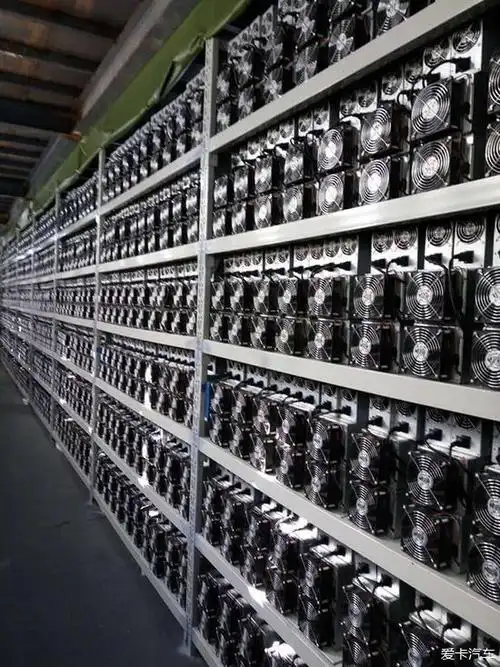In the arena of cryptocurrencies, Bitcoin stands as a titan, a digital gold that has captured the attention of investors, tech enthusiasts, and everyday individuals alike. Yet, the allure of this decentralized currency often brings with it a burning question: how can one effectively mine Bitcoin? The answer lies heavily in the choice of mining hardware. As the Canadian Bitcoin mining scene heats up, understanding the intricacies of choosing the right mining machine becomes paramount for anyone eager to carve out a niche in the expansive landscape of cryptocurrencies.

First and foremost, it’s essential to grasp the types of mining machines available. ASIC miners, or Application-Specific Integrated Circuits, represent the cutting-edge of Bitcoin mining hardware. Engineered specifically for the task of mining cryptocurrencies, these devices offer unparalleled efficiency and hashing power compared to traditional GPUs. However, this fine-tuned equipment comes with its own challenges, including higher costs and potential availability issues, especially as the sector experiences surges in popularity.
Conversely, many enthusiasts might opt for GPU mining rigs. While these systems are typically associated with mining Ethereum or other altcoins, hybrid models can be designed to mine Bitcoin as well. The versatility of GPU mining can be appealing, especially for diversified portfolios aiming to take advantage of price fluctuations in multiple currencies, including Dogecoin and Ethereum. Yet, they can be much less efficient when pitted against the focused ASIC miners.

When considering a mining operation, physical infrastructure such as mining farms comes into play. These facilities house multiple mining rigs, ensuring efficient power consumption and cooling—a necessity as heat management becomes critical in high-performance settings. Canada, known for its cooler climates and competitive electricity rates, offers an attractive environment for such ventures. Building a mining farm can be a lucrative option, but it requires an investment in hardware, space, and operational costs that can rapidly accumulate.
Power consumption is another vital factor in the mining equation. Bitcoin mining can be incredibly energy-intensive, prompting operators to search for locations with cheaper electricity. Resolute strategies include choosing renewable energy sources, which not only align with sustainability goals but can also reduce overhead costs significantly. Given the rising concerns surrounding environmental impacts, this approach can even enhance a mining operation’s public image.

Deciding between hosting services and building your own mining setup also poses a dilemma for would-be miners. Hosting services typically offer a streamlined path—equipment is managed in a professional setting, temperature and power are regulated, and maintenance is handled by the provider. This solution mitigates some risks associated with DIY setups, making it an attractive option, especially for beginners unsure of their technical capabilities. Moreover, hosting services can provide access to the latest in mining technology without requiring the hefty upfront costs associated with purchasing machinery outright.
Exchanges also play a crucial role in the cryptocurrency ecosystem. Understanding where to trade mined Bitcoins and how to navigate the ever-evolving landscape of exchanges becomes essential. A reliable exchange can help in liquidating your Bitcoin efficiently, while also providing insight into market trends—a valuable asset in maximizing returns on your mined assets.
As the Bitcoin mining industry continues to evolve, so too will the machines used to power it. Future innovations promise even higher efficiencies and lower power consumption, potentially changing the way miners approach their operations. Staying informed about these technological advancements is critical—those who adapt quickly to changes in hardware and market dynamics will likely see the most success in the long run.
Finally, one cannot overlook the community aspect of cryptocurrency mining. Engaging with other miners through forums or local meetups can provide invaluable insights and support. Many successful miners share strategies and experiences, enhancing the collective knowledge and fostering a sense of camaraderie in this often solitary venture. Whether discussing the latest mining hardware or deciding on the best exchanges, these interactions can sharpen one’s approach, creating a collaborative atmosphere rife with opportunities.

In conclusion, as Canadian Bitcoin mining continues to grow, the choice of mining hardware remains a fundamental aspect of this journey. From ASICs to GPU rigs, each option carries its own benefits and challenges; hence, a thoughtful selection is necessary based on individual goals, budget, and market trends. With considerations of infrastructure, power consumption, hosting services, and community engagement, prospective miners can position themselves to thrive in the captivating world of cryptocurrency.
This article dives into Canadian Bitcoin mining, exploring diverse hardware options amid fluctuating energy costs and climate factors. It highlights performance, durability, and regional regulations, offering an unpredictable yet insightful guide for miners aiming to optimize efficiency and profitability in a complex market.